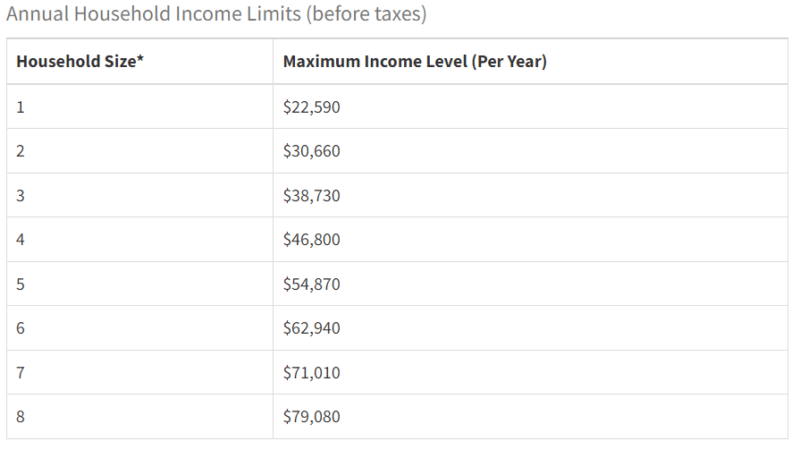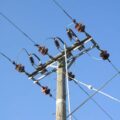As utility bills continue to rise, more and more households are struggling to keep the lights on. In fact, according to The National Energy Assistance Directors’ Association (NEADA), over 20.5 million households were behind on their electricity bills as of January 2023.
That’s one out of six households in the country. So if you’re struggling with utility bills, you’re not alone.
Thankfully, you can get help with electric bills if you’re falling behind. And this guide is covering the range of assistance programs and options you have at your disposal.
5 Ways To Get Help Paying Your Electricity Bill
Between various government assistance programs and other forms of financial assistance, here are five ways you get help with your electricity bills:
1. Contact Your Utility Company
If you’re falling behind on your energy bills, one of the first things you can do is contact your utility company to work things out.
Some companies offer installment plans to customers who are behind on payments. This lets you pay off your overdue balance over a longer period of time instead of having one larger upfront payment.
Utility companies often have useful features for customers as well. Some let you set energy usage alerts and budget reminders so you know how much your bill will be. And some utilities companies let you choose your due date, so you can sync your payments with your paychecks.
2. Apply For The Low Income Home Energy Assistance Program (LIHEAP)
The Low Income Home Energy Assistance Program (LIHEAP) helps low-income households with heating, cooling, weatherization, and energy-related home repairs. It can also provide energy crisis assistance if your electricity gets shut off.
The main benefit of LIHEAP is that you can get financial assistance to pay your energy bills. However, its crisis program can provide you with funds in as little as 24 hours if your energy is shut off. This crisis program can also pay off your energy bill by working directly with your utilities company so your power stays on.

Qualification for LIHEAP depends on your household income and how many members are in your household. The maximum income level for a household of one person is $22,590 per year to qualify.
See the table above for income eligibility requirements for LIHEAP or call 1-866-674-6327 to get help with applying for LIHEAP benefits.
3. Ask For Help From Charities
Numerous charities can also help you if you’re behind on electricity bills. This is because many charities offer emergency financial support or can provide services like free AC units to those in need.
The Dollar Energy Fund is a great example. It helps low-income individuals and households maintain utility services by providing financial assistance grants. To date, it’s helped over 840,000 families and individuals in the 40+ years it’s been operating.
The Salvation Army also provides utility bill assistance. This can look like grants or partnerships with various nonprofit organizations that help families in need. Support generally varies by state, so contact a local Salvation Army to see what help is available.
Finally, the 2-1-1 Program, which is run by United Way, also provides utility assistance. This can help you pay off your electric, gas, water, and internet bills if you’re falling behind.
It’s also worth noting that there’s a range of church assistance programs that can help too. Some of these programs provide free hotel vouchers or assist with living costs and bills.
👉 Must-Know Shortcuts To Becoming Debt Free.
4. Apply For The Weatherization Assistance Program (WAP)
Like LIHEAP, the Weatherization Assistance Program (WAP) helps low-income households with their energy bills by making their homes more energy efficient.
According to its website, weatherization upgrades and improvements help households save $372 per year on average. This is largely because homes require less constant heating and cooling once they’re more energy efficient.
To learn more, you can contact your state’s weatherization administrator and get started online. Just note that households must be at or below 200% of the poverty income guidelines to be eligible.
5. Look For Local & Statewide Energy Assistance Programs
Sometimes, states have their own energy assistance programs. Or, perhaps your state has its own grassroots charity or organization that assists families in need.
For example, there’s the Good Neighbor Energy Fund in Maryland. In Rhode Island, there’s the Keep the Heat On initiative. Arizona also has its Home Energy Assistance Fund (HEAF) while Texas has its own Comprehensive Energy Assistance Program (CEAP).
The point is, do some research to see what’s available in your state and county.
👉 30+ Ways To Lower Your Cost Of Living.
What Do You Do If Your Electricity Is Disconnected?
If your energy is shut off, the first step is to contact your utility company. You need to ensure your power is actually disconnected and that there isn’t a power outage in your area. But, more importantly, you can often work things out with your energy provider if you get on a repayment plan.
If there’s no chance of getting your power turned back on, you can consider options like LIHEP’s energy crisis program or calling the 2-1-1 program. Similarly, local charities might be able to help you out if your energy is disconnected.
You can also consider options like personal loans or using cash advance apps like Klover to get quick cash to cover your bills. However, be mindful of taking on debt to deal with late payments since this is a slippery slope.
👉 8 Nice Companies To Ask For Free Cash.
Understanding Electricity Shut Off Laws
Energy disconnection or shut off laws vary by state. For example, many states prohibit turning off power depending on outside temperatures. Seniors, veterans, qualifying low-income households, and disabled individuals may also have some protections.
You can view a list of state disconnection policies on LIHEAP’s website. Familiarize yourself with your state’s rules so you know your rights.
Moving Forwards: Finding Ways To Reduce Your Energy Bill
If you’re struggling to pay your electricity bill, getting caught up on late payments should be the first goal. This is where making a bit of extra cash with a side gig goes a long way.
However, figuring out ways to use less energy and lower your monthly bills also helps. Here are a few top tips to help lower your utility bills:
- Take shorter showers
- Turn off the lights when leaving a room
- Shut your doors and close the curtains
- Be mindful of when you do laundry and limit how often you do it
- Make your home more energy efficient
- Take shorter showers
- Reduce dishwasher usage
- Turn appliances on standby mode or unplug them when not in use
Even shaving $20 per month in energy usage is $240 per year back in your pocket. So, don’t be afraid to get frugal and save more money when times are tough.
Pro Tip 💡 Earn cash rewards by using less energy! Find energy companies that pay their customers with the free Energy Saver Tool!
Final Thoughts
If you're struggling to pay your electricity bill, you're not alone. But you don't have to fall behind on payments forever or have the power shut off.
Use the range of assistance programs and supports that are out there. And above all else, remember to work with your utility company to stay connected.
👉 10 Real Ways To Make Money From Home.
👉 16 Companies Giving Away Free Stuff.
👉 Free Gas Cards & Vouchers: What You Need To Know.


